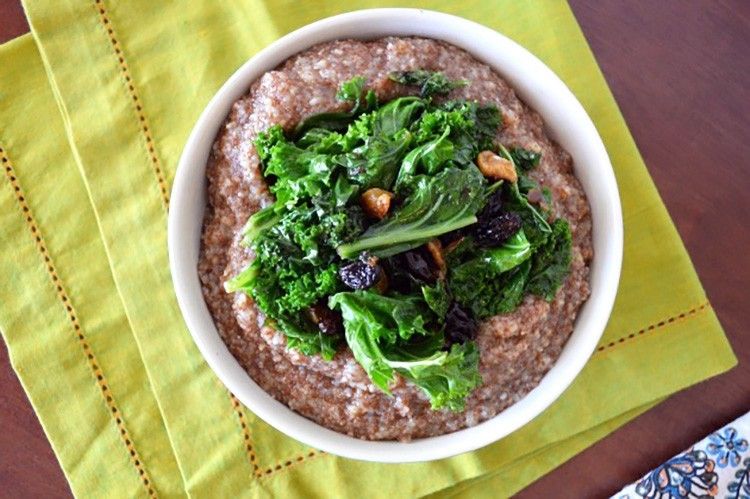

Whether you’re living the gluten free life or just want to experiment with cool new ingredients, teff should be high on your list.
Sometimes written as tef or t’ef, this grain (actually a pseudo-grain, since it’s technically a seed) is the smallest whole grain in the world. Teff has a beautiful dark brown color, a great earthy flavor similar to amaranth or quinoa and can be used in many of the same ways in the kitchen.
Teff is known as an ancient grain, one that has survived through the centuries without much hybridization or processing. Most ancient grains maintain a high nutritional profile, especially if you compare it to common bleached wheat flour that makes up the basis of our standard American diet. Even if you don’t want to give up wheat, experimenting with ancient grains is delicious and healthful, giving the body a chance to experience a whole grain and get the benefits from a new range of vitamins and minerals. Most ancient grains are gluten-free too, which is why they are gaining in popularity across the foodie world.
Teff is traditionally cultivated in Ethiopia and Eritrea, where it is consumed as a staple grain. It is becoming more popular around the world, as the high productivity and resiliency of the plant become more known.
Like most other ancient grains, teff is super nutritious. Most famous for the high fiber and calcium content, it’s also a good source of iron. Just one quarter cup of dry (uncooked) teff has 4 grams of fiber—about 16 percent of your daily value; the calcium content comes in at about 10 percent and iron at about 20 percent. Teff is also high in what’s known as “resistant starch.” As the Whole Grain Council explains, resistant starch is, “a newly-discovered type of dietary fiber that can benefit blood-sugar management, weight control and colon health. It’s estimated that 20-40 percent of the carbohydrates in teff are resistant starches.”
Teff can range in color from ivory to brown, though the brown is much more common. Teff flour can also be made from either ivory or brown teff, though brown seems to be more common. Teff flour has a beautiful light brown color and mild, grassy flavor that lends itself well to rich spices and quickbreads like banana and pumpkin. Find teff in the bulk section if you’re lucky or find it online. Bob’s Red Mill makes bags of teff and teff flour as part of their “Grains of Discovery” series. Unlike most other grains, it’s very hard to find organic teff.
Even if you’re never heard of teff before, you have probably eaten it if you have ever tried Ethiopian food. Teff flour is fermented and used to make injera, the spongy flatbread upon which lentils, cabbage and other foods are served.

This new recipe for a teff and polenta porridge is a great way to add this new grain into your life alongside a familiar staple like polenta. Choose your favorite bitter greens like dandelion, mustards or just some kale to balance out the sweetness of the raisins.
Teff Bowl With Bitter Greens
2 1/2 cups water or vegetable broth
1/2 cup polenta (coarse-ground cornmeal)
1/2 cup teff (whole)
1/2 teaspoon of sea salt
3 Tablespoons olive oil, divided
2 cloves garlic, minced finely
5 cups chopped bitter greens
1/4 cup raisins or finely chopped dried apricots
1 teaspoon soy sauce or tamari
1. Bring water/broth to a boil. Add polenta, teff, salt and one Tablespoon of oil. Stir to combine, then reduce heat to low. Cover and simmer for 10-15 minutes, stirring often. Add more liquid if mixture seems clumpy or thick; it should be smooth and creamy and a bit soupy—it will firm up as it cools.
2. In a large skillet, heat remaining olive oil until warm. Add garlic and cook until browned, about three minutes. Add in greens and toss just until wilted, about one to two minutes. Remove from heat and toss in raisins, then drizzle with soy sauce. Toss to coat evenly.
3. When grains have finished cooking, divide into two or four serving bowls. Top with greens and serve while warm.
Here are a few other recipes to try out with this fun and funky grain:

3. Teff and Bean Burgers from Healthy Tipping Point
4. Tomato and Mushroom Teff Polenta
5. Injera, the Ethiopian flatbread

 233k
233k  41k
41k  Subscribe
Subscribe 